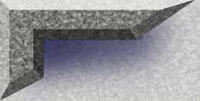Ratatouille
This
Niçoise dish is much more than a vegetable soup. It can be prepared fairly quickly by cooking everything together at the same
time.
It's
also true that the recipe can legitimately vary (somewhat) according to tastes, but the variations should be based on experience.
The volume is also very variable.
"Too
much" doesn't apply to ratatouille. Cook it the first time, and eat it hot as the main course; then have it again later as
a cold hors-d'oeuvre. In the summer time, it's great as a cold main-course dish. It keeps for several days in the refrigerator.
Ratatouille is good served with couscous grain (semolina) or rice.
Recipe
(6 people) (or a section of Poilus...)
Tomatoes
(1.6 kg)
Eggplant
- aubergines (700 g) (Leeks can be used, also)
Zucchini
- courgettes longues (700 g)
Green
bell pepper - poivrons verts (700 g)
Onion
(1 kg)
Garlic
- d'ail (6 cloves)
Herbes
de Provence
(basilic,
thyme, parsley)
Olive
oil (came in 1, 2, 4 and 10-liter tins for French Field kitchens)
Salt,
Pepper
Method:
Method
for home preparation to fill your buthéons or marmites
before leaving for the field: (Also very handy to impress the lady reenactors when having them over for a mission planning
session--Go easy on the garlic in this case... :-).
Of course, if you follow the evil cult of low-carbs,
this is one you can eat 24/7 (Alors, no baguette, no rice, no semoline...)
1. Peel and drain the tomatoes. * (don't mind
the seeds) (omit the peeling if you don't mind rinds floating around, as you shouldn't, soldat!)
2. Chop the onion and garlic. Clean the bell
pepper, cut into small strips.
3. In a large cooking pot with thick bottom,
put in olive oil, onions and chopped garlic. Add in the bell pepper. Cook for 20 minutes, stirring frequently.
4. Add the peeled tomatoes and herbs de Provence.
Stir well and cook for another 15 minutes.
5. Cut the eggplant into rondelles. Cut the
un-peeled zucchini into rondelles.
6. Add the eggplant and zucchini to the pot.
Cook for about 30 minutes.
*
Peeling tomatoes: cut out the stem cores; drop the whole tomatoes into boiling water for 2 minutes. Remove into a colander.
Make an X cut in the top, then peel off the skin.
-
Cooking Pot. Anything you have. At home, you can be picky; in the field any pot-au-feu will do that holds the ingredients!)

